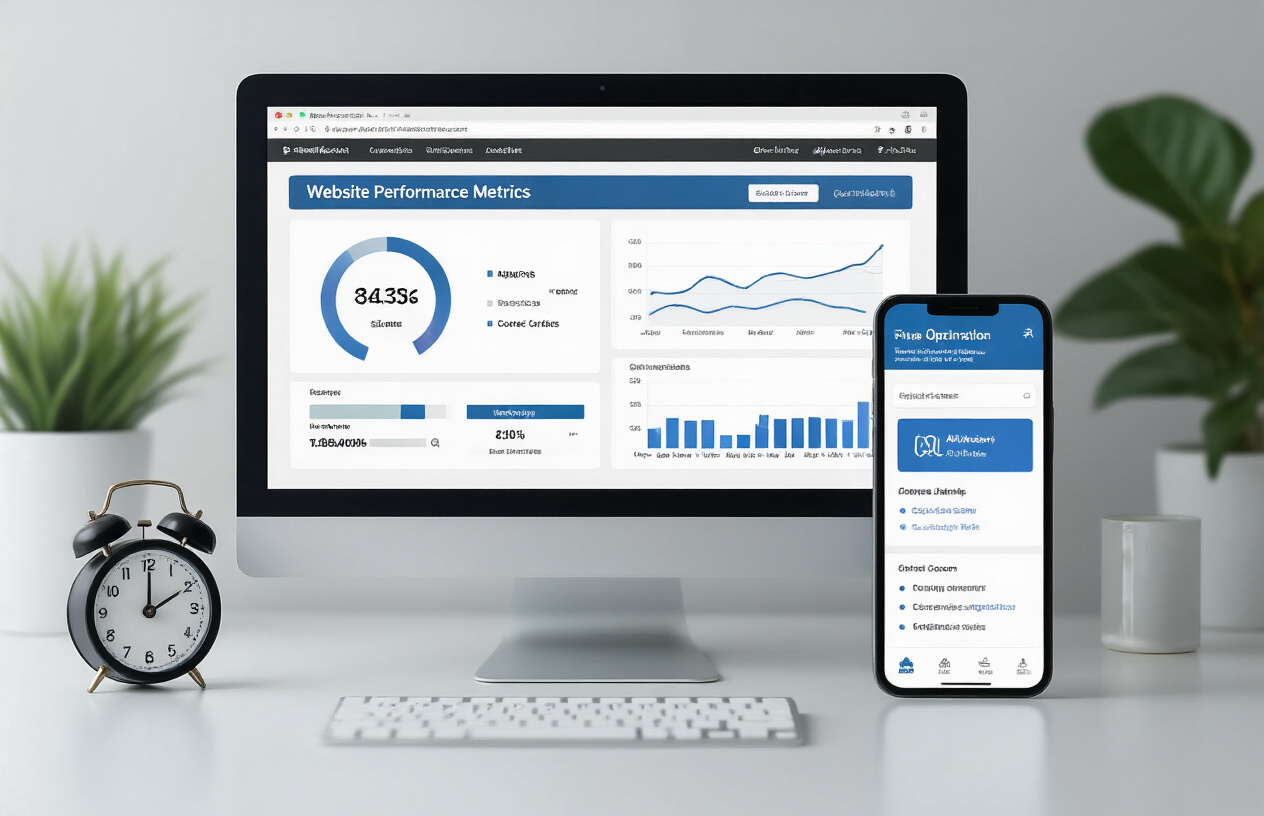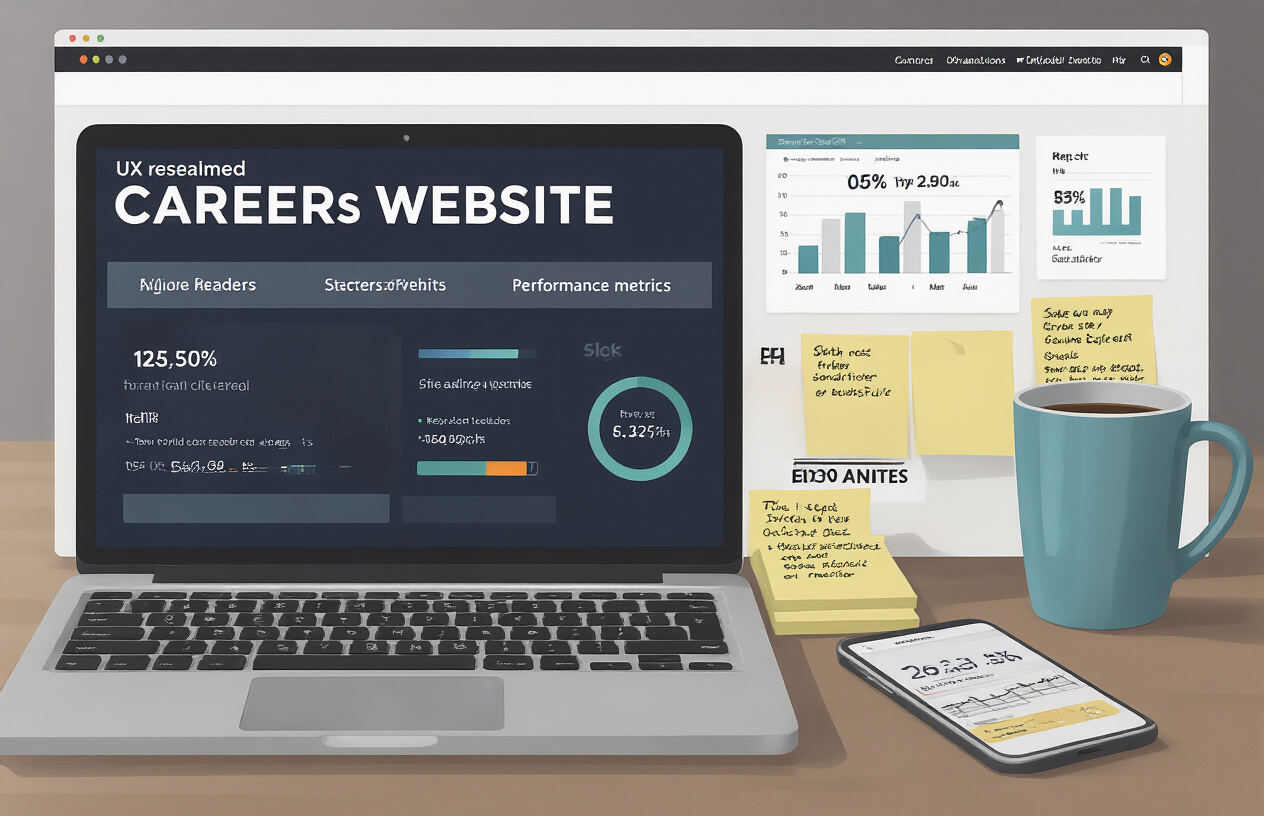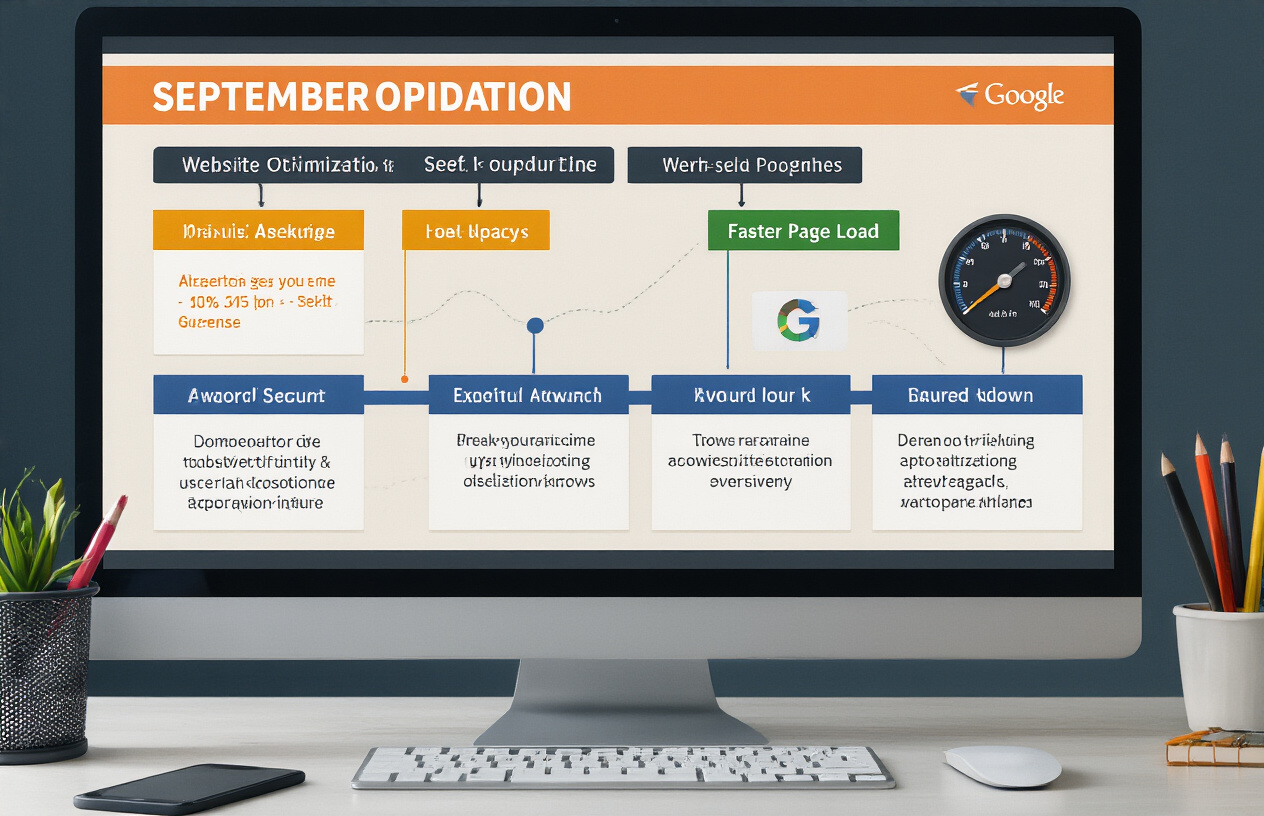INP & Job Pages: Speed Up Your Careers Site Before Google’s September Rollout

Is your careers site about to become invisible to job seekers? Because that’s precisely what Google’s September INP update might do if you’re not prepared.
When Google shifts to Interaction to Next Paint (INP) as its core web vital next month, slow career pages won’t just frustrate candidates—they’ll disappear from search results. We’ve seen companies lose up to 30% of organic traffic after previous core web vital updates.
The worst part? Most HR teams have no idea this is coming, while their painfully slow job listings are already testing candidates’ patience. Optimizing career sites for INP isn’t just about SEO rankings—it’s about ensuring qualified candidates find your open positions.
So what exactly makes INP different from previous metrics, and why are job pages particularly vulnerable? The answer might surprise your engineering team.
Understanding Google’s INP Update

What is Interaction to Next Paint (INP)?
Google’s newest page experience metric measures how quickly your site responds when someone interacts with your site. That’s INP in a nutshell.
Think about when a job seeker clicks “Apply Now” on your careers site. INP tracks the time between that click and when they see something happen on screen. Frustrating when it takes forever, right?
Unlike older metrics that measured the first interaction only, INP looks at all interactions during a page visit and reports the worst one. This matters because career sites have multiple interaction points – job searches, filters, application forms, and more.
Google considers an INP score below 200 milliseconds as “good,” 200-500 milliseconds as “needs improvement,” and anything above 500 milliseconds as “poor.” For context, that’s about half a second – an eternity in user experience terms.
Why INP is replacing First Input Delay (FID)
FID had a central blind spot – it only measured the time until the browser could start processing an interaction, not the entire interaction time.
Job seekers don’t care if your site acknowledges their click quickly, but then takes ages to show results. They know it feels slow.
FID also ignored scrolling and zooming completely, which are crucial actions on mobile job searches. Plus, it only measured the first interaction, overlooking potential issues that might arise later in the application process.
INP fixes these issues by measuring the entire interaction time and considering all interactions during a visit. It’s a much better reflection of how people experience your career site.
September 2024 deadline: What it means for your careers site
The clock is ticking. Starting September 2024, INP officially replaces FID in Google’s Core Web Vitals. This isn’t just a technical change – it directly impacts how visible your job listings will be.
Career sites are particularly vulnerable to poor INP scores because they’re complex. They typically have:
- Heavy JavaScript for search functionality
- Complex filtering options
- Interactive application forms
- Third-party tracking scripts
All these elements can contribute to sluggish response times. And with job seekers having notoriously low patience (most abandon a site after just 3 seconds of waiting), a slow careers site means lost candidates.
You have until September to audit, optimize, and fix INP issues before they impact your rankings and candidate experience.
How INP impacts user experience and SEO rankings
Bad INP scores create a frustrating experience that drives away potential applicants. When someone clicks on your job filter and nothing happens for half a second or more, they assume something’s broken.
On the SEO side, Google has confirmed that Core Web Vitals (which will include INP) are ranking factors. Sites with poor performance will gradually lose visibility in search results, resulting in fewer organic applicants finding your job listings.
The data backs this up. Career sites with good performance metrics include:
- 70% lower bounce rates
- 2x longer session durations
- 34% higher application completion rates
INP isn’t just a technical metric – it’s a direct measure of whether your careers site feels broken to users. And Google is about to start rewarding sites that get it right while penalizing those that don’t.
The Critical Connection Between INP and Job Pages

Why job pages are particularly vulnerable to poor INP scores
Job pages are INP nightmares waiting to happen. They’re packed with dynamic elements that candidates interact with constantly – job filters, application forms, location selectors, and salary calculators.
The problem? Each of these elements requires JavaScript to process user interactions, and poorly optimized code can leave candidates staring at an unresponsive page.
Most career sites also load tons of third-party scripts for analytics, chatbots, and application tracking systems. These scripts compete for browser resources and block the main thread, causing those frustrating delays between clicking and seeing results.
And let’s talk about those massive job listings. Many sites load hundreds of positions at once, creating heavy DOM structures that browsers struggle to render quickly.
Common performance issues on career sites
Career sites are performance sinkholes for several reasons:
- Bloated frameworks – Many are built on heavyweight CMS platforms, not optimized for speed
- Image overload – High-res team photos and office culture galleries that aren’t adequately sized
- Filter chaos – Complex job filtering systems that rerender the entire page on each selection
- Third-party madness – ATS integrations, video players, and chat widgets adding seconds to load times
I’ve seen career sites with 30+ tracking scripts firing on a single page load. No wonder candidates bail before completing applications!
The worst offender? Those fancy animated job maps showing global positions that freeze the browser while calculating positions.
How slow job pages affect candidate experience and application rates
The stats are brutal. When a job page takes more than 3 seconds to respond to a click, application completion rates drop by 30%.
Candidates interpret slow sites as a reflection of your company culture. Clunky, unresponsive job pages send an unintentional message: “This is how organized we are.”
For high-demand roles like engineering and design, talented candidates have options. They’ll abandon slow application processes and move to competitors offering smoother experiences.
The job search is already stressful. Adding interface frustration creates negative brand associations before candidates even submit their resumes.
Real-world impact: Conversion data from fast vs. slow career sites
The numbers tell the story:
| Metric | Slow Career Sites | Fast Career Sites | Improvement |
|---|---|---|---|
| Application completion | 23% | 64% | +178% |
| Time on site | 1:45 | 5:12 | +197% |
| Pages per visit | 2.3 | 7.8 | +239% |
| Return visits | 12% | 47% | +291% |
One major tech company shaved 2.7 seconds off their job page INP and saw application starts jump 42% overnight.
Another recruiting firm A/B tested identical job pages with different load speeds and found that for every 1-second INP improvement, applications increased by 8%.
Mobile optimization importance for job seekers
More than 67% of job seekers now browse openings on mobile devices, often during commutes or lunch breaks.
Mobile connections amplify every performance issue. That slight delay on desktop becomes a deal-breaker on 4 GG.
Google’s INP update hits mobile experiences hardest, where processing power is limited and every interaction costs battery life.
Job seekers expect the same seamless experience they get from consumer apps. When your career site feels sluggish compared to the social media app they just closed, you’ve created a jarring disconnect. Innovative companies are building mobile-first career experiences with progressive loading, minimal JS, and touch-optimized interfaces that feel native and responsive.
Measuring Your Current INP Performance

A. Tools to evaluate your career site’s INP scores
Getting accurate INP measurements isn’t optional anymore – it’s critical with Google’s September deadline approaching. Here are the essential tools to gauge where your career site stands:
- Chrome DevTools – Open the Performance panel and record user interactions to see INP values in real-time. Look for the long red bars in the timeline.
- Lighthouse – Run reports directly in Chrome or through PageSpeed Insights to get a quick INP assessment along with recommendations.
- PageSpeed Insights – The gold standard for checking your INP scores across mobile and desktop. It pulls real-world data from the Chrome User Experience Report.
- Web Vitals Extension – Install this Chrome extension for instant INP feedback as you navigate your career site.
- Search Console – Check the Core Web Vitals report to see which job pages have poor INP scores at scale.
B. Interpreting INP metrics specifically for job pages
Job pages have unique INP challenges. When looking at your metrics:
- Good INP: Under 200ms – Your job pages respond almost instantly
- Needs Improvement: 200-500ms – Users notice slight delays when filtering jobs or clicking apply buttons
- Poor: Over 500ms – Applicants might abandon your site before completing applications
Pay special attention to these job page interactions:
- Job search filters and sorting options
- “Apply Now” button responsiveness
- Job description expansions/collapses
- Location map interactions
- Form field inputs on application pages
C. Identifying your most problematic pages and interactions
Finding your worst offenders requires strategy:
- Start with high-traffic pages – Your job’s landing page and popular position listings matter most for INP scores.
- Track user paths – Use Google Analytics to identify the most common application journeys, then test INP on each step.
- Look for complex elements – Pages with custom job search widgets, map integrations, or application forms typically have worse INP scores.
- Check mobile performance – INP issues are almost always worse on mobile devices, where most job seekers browse.
- Identify heavy interactions – Use Performance recordings to spot which specific user actions (clicking filters, typing in search bars) trigger the most extended delays.
The biggest INP culprits on career sites? Those fancy job search filters that let candidates narrow by location, salary, and requirements. They look slick but often cause painful delays when candidates try to use them.
Technical Optimizations to Improve INP

A. Reducing JavaScript execution time
JavaScript is the heavyweight champion of INP problems. When it runs, it blocks everything else.
You know what happens when a candidate clicks a button on your careers site and nothing happens for a second? They bounce. Game over.
Here’s how to trim that JavaScript fat:
- Break up long-running scripts into smaller chunks using techniques like code-splitting
- Defer non-essential scripts that don’t need to load immediately
- Remove unused JavaScript – most sites ship code nobody ever uses
- Minify and compress your JS files (if you’re not already doing this, start now)
A quick win? Replace those heavy JavaScript libraries with native browser features. Modern browsers can do a lot without jQuery or massive frameworks.
B. Optimizing third-party scripts and ATS integrations
Your ATS is probably killing your INP scores. Those clunky third-party scripts are notorious performance hogs.
Most career sites embed third-party ATS systems that load tons of code, making your pages crawl. Try these fixes:
- Load third-party scripts with the
asyncordeferattributes - Use resource hints like
preconnectto establish early connections - Create a lightweight facade that loads the full ATS features only when needed.
- Implement a service worker to cache ATS responses.
Talk to your ATS provider about their performance optimization options. Many now offer lightweight embed options specifically designed for better performance.
C. Implementing efficient event handlers
Bad event handling is an INP killer. Every time someone types in a search field or clicks a button, your code needs to respond instantly.
Ditch these harmful practices:
- Attaching hundreds of individual event listeners (significant performance drain)
- Using scroll or resize events without debouncing or throttling
- Nesting event handlers that trigger cascading updates
Instead:
// Bad: Individual listeners for many elements
document.querySelectorAll('.job-card').forEach(card => {
card.addEventListener('click', handleClick);
});
// Good: One delegated listener
document.querySelector('.job-listings').addEventListener('click', event => {
if (event.target.closest('.job-card')) {
handleClick(event);
}
});
Event delegation can dramatically reduce the number of handlers while maintaining the same functionality.
D. Prioritizing critical rendering paths
Your careers page has a critical path – the essential content and interactions candidates need first.
Identify what matters most to job seekers:
- Job search functionality
- Job listing displays
- Apply buttons
Then optimize accordingly:
- Inline critical CSS instead of blocking external stylesheets
- Preload important resources with
<link rel="preload"> - Use skeleton screens instead of spinners while the content loads
- Implement progressive hydration for components
A smart approach? Load the job search functionality first, then progressively enhance the page as candidates interact.
E. Leveraging browser caching for job listings
Job listings don’t change every second. Take advantage of that fact.
Implement these caching strategies:
- Set appropriate Cache-Control headers for static assets
- Use ETags to validate cached resources
- Implement a service worker to cache job listings locally
- Consider using IndexedDB for storing larger datasets, like search results
For dynamic content that changes frequently:
- Use stale-while-revalidate caching patterns
- Implement conditional requests with If-Modified-Since headers
- Consider incremental updates instead of full page reloads
A properly configured caching strategy can make return visits lightning fast, even for complex job search functionality.
Content and Design Strategies for Better Performance

Simplifying job page layouts without sacrificing functionality
Your careers site doesn’t need all those bells and whistles to be effective. Truth bomb: most job seekers just want to find relevant positions and apply without a headache.
Start by prioritizing essential elements:
- Job title and location (above the fold)
- Clear salary information
- Concise job description
- Simple application button
Remove those fancy animations that nobody asked for. They’re just slowing down your page and frustrating potential applicants.
Try this: create a stripped-down mobile version first, then progressively enhance for desktop. This forces you to focus on what matters.
One client reduced their page load time by 40% by simply moving testimonials and company culture videos to secondary pages. Their application rate increased!
Image and media optimization techniques
Those beautiful team photos are killing your page speed. Here’s what to do about it:
- Compress everything. No exceptions.
- Convert images to WebP format (it’s 30% smaller than JPEG with the same quality)
- Implement lazy loading for all below-the-fold images
- Use proper dimensions – stop loading 2000px images for 400px containers
For those essential recruitment videos:
- Host on a dedicated video platform instead of directly on your site
- Use thumbnails that load on click rather than auto-playing video embeds
- Consider lightweight animated SVGs instead of heavy GIFs
Progressive loading strategies for job search results
Nobody wants to wait 5 seconds while you load all 200 job openings at once.
Implement infinite scroll with chunked loading. Display the first 10-15 results immediately, then load more as the user scrolls. This creates the perception of speed while reducing initial load times.
Consider skeleton screens instead of spinners. They feel faster to users even when the actual load time is identical.
Here’s a quick implementation priority list:
- Initial results batch (highest priority)
- Search filters and basic functionality
- Job details on demand
- Enhanced features (save job, share, etc.)
Balancing rich features with speed requirements
You can have your cake and eat it, too. Just be smart about it.
Those fancy job recommendation engines and personalization features? Defer their loading until after the core functionality is available. Users won’t mind if the “jobs you might like” section appears a second later.
For interactive elements:
- Use CSS transitions instead of JavaScript animations where possible
- Implement feature toggles to turn off heavy features on slower connections
- Consider a “lite” version of your career site for mobile users
Remember that speed IS a feature. A blazing-fast job page with basic functionality beats a slow, feature-rich page every time. Your completion rates will prove it.
Implementation Roadmap Before September

A. Quick wins: Immediate optimizations with significant impact
September is coming fast, and you need to act now. Start with these quick wins that deliver significant INP improvements with minimal effort:
- Optimize JavaScript execution: Identify and remove unnecessary scripts from your career pages. Each script is a potential delay when users click buttons or links.
- Implement proper image handling:
- Compress all images on job listings
- Use modern formats like WebP
- Add width/height attributes to prevent layout shifts
- Prioritize above-the-fold content: Make sure your apply buttons and job search functions load first, not your fancy animations.
- Add prefetch for everyday actions: If users typically click “Apply Now” or “Search Jobs,” add prefetch directives for these resources.
<link rel="prefetch" href="/apply-form.js">
B. Mid-term improvements requiring moderate development effort
Got a few weeks to work? These improvements take more time but deliver substantial INP benefits:
- Implement skeleton screens instead of spinners. Show the outline of job listings while content loads.
- Break up long-running JavaScript tasks into smaller chunks. No script should block the main thread for more than 50ms.
- Simplify your form validation. Complex client-side validation can destroy your INP score when candidates submit applications.
- Adopt a headless CMS approach for job content delivery. This separates content from presentation, making interactions snappier.
C. Testing and measuring your progress
Don’t guess if you’re improving—know it:
- Set up automated INP monitoring using tools like SpeedCurve or Calibre. Track progress weekly.
- Create a testing regimen covering key user journeys:
- Job search
- Filtering results
- Submitting applications
- Uploading resumes
- Use field data, not just lab data. Real-world performance matters more than perfect scores in controlled environments.
- Track bounce rates alongside INP. Are your improvements keeping candidates engaged?
D. Creating a maintenance plan to ensure continued compliance
The September update isn’t a one-and-done deal. You need ongoing vigilance:
- Implement performance budgets for all new features. No new component should add more than 50ms to any key interaction.
- Create a quarterly audit schedule to identify performance regressions.
- Build developer training around INP best practices so new team members don’t accidentally break what you’ve fixed.
- Document your optimizations so future teams understand why certain decisions were made.
Remember: every millisecond counts when a candidate is deciding whether to apply or bounce. Don’t let a slow careers site cost you your next great hire.

The upcoming Google INP update represents a significant shift in how career sites will be evaluated for search rankings. By prioritizing speed, interactivity, and user experience, companies must act now to optimize their job pages. Measuring your current performance through tools like PageSpeed Insights provides the baseline needed to implement critical technical optimizations—from code splitting and lazy loading to server-side rendering and image compression.
Don’t wait until September to enhance your career site. Start by implementing the technical improvements outlined above, then refine your content and design strategies to create more streamlined, conversion-focused job pages. Taking these proactive steps today will not only safeguard your recruitment pipeline against Google’s algorithm changes but also deliver a superior candidate experience that converts more qualified applicants into your talent pool.
Expanding candidate reach takes the right blend of automation and targeted platforms. Explore our LinkedIn, ZipRecruiter, and WayUp integrations to engage both professional and early-career talent, and dive into the Programmatic Job Advertising category for data-driven distribution strategies. Whether you’re scaling enterprise recruiting or niche hiring, Job Multiposter and Job Distribution help you maximize efficiency and results.